Last Update: July 14, 2019
We want (and need) a ubiquitous electric car fast charging system. Fast charging makes our electric cars more useful, and therefore more valuable. Fast charging does this by enabling faster travel with an electric car, because the car will gain more miles of range per hour of charging. Because of the quicker recharging, enjoyable electric car road trips require fast charging.
Unfortunately the fast charging market is currently (mid 2019) split between three or four incompatible fast charging standards. We know from electric car history that incompatible charging systems creates pain and suffering. Someone would arrive at a charging station, maybe on their last electron, and be unable to charge because the charging connector on the charging station is incompatible with the charging port on their car.
If there is a single electric car fast charging standard, then car owners do not have this worry.
Contents
Charging connector standards
Economically speaking, competing charging standards mean the investment in charging infrastructure is not focused but spread between the competing systems. Namely:-
- CHAdeMO -
- Primarily used by Nissan in the Nissan Leaf.
- It was first deployed in Japan in 1998.
- It is widely deployed around the world.
- It was developed by TEPCO and the Japanese automakers, and was later adopted by a standards organization.
- Combo Charging System (CCS) -
- Pushed by a consortium of German and American car companies.
- It was first deployed in 2013.
- It is starting to be widely deployed around the world.
- It was developed by the SAE, the main standards body for the automotive industry.
- Tesla Supercharger -
- A proprietary system developed by Tesla Motors for the Tesla Model S, Model X and Model 3
- It was first deployed in 2013.
- It is very widely deployed around the world, in a network structured correctly to support long distance travel.
- It was developed by Tesla specifically for Tesla's cars, and has not been touched by any standards organization.
- China GB/T -
- A China-specific fast charging system used by some Chinese car makers.
- Three phase AC -
- Some electric cars sold in Europe support three-phase AC fast charging, where the other fast charging systems use DC fast charging.
- Three phase AC is widely available in Europe, and therefore this makes sense.
- The system is non-proprietary.
To make this a little more concrete, let's look at the connector shapes.

There are two types of CCS plug, one for the USA and the other for Europe. To arrive at the CCS plug, the standards committee took the existing plug used for single phase AC charging and bolted on two large pins to be used for DC charging. The plug for CHAdeMO is a worldwide standard. In Europe, Tesla is reportedly switching to the European CCS connector.

In the USA and some other countries, Tesla uses this connector for both single phase AC and DC fast charging.
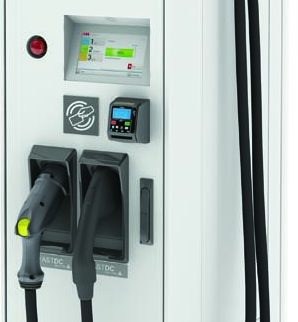
The one bright spot in this is that the non-Tesla-non-China charging stations tend to support both CHAdeMO and CCS in the same station. That means a non-Tesla car owner can drive up to a non-Tesla fast charging station and most likely receive a fast charge.
Otherwise this is a three-way tug of war (with China being its own universe) that leaves consumers holding the short end of the stick.
Macroeconomics of charging station infrastructure
The macroeconomics of the global fast charging infrastructure is another pain point, beyond the inconvenience of incompatible charging cords.
Macroeconomics is a branch of economics dealing with the performance, structure, behavior, and decision-making of an economy as a whole. This includes regional, national, and global economies. Macroeconomists study aggregated indicators such as GDP, unemployment rates, national income, price indices, and the interrelations among the different sectors of the economy to better understand how the whole economy functions. -- Wikipedia
Think of all the money spent on all electric car charging infrastructure. Because of the competing charging systems, that pool of money is split three ways (four counting China).
Think about if the automakers (including Tesla and China) would all settle on the Combo Charging System, because it is adopted by the broadest set of car makers, and is standardized through the SAE. The charging infrastructure would quickly refocus to supporting CCS fast charging. Folks could use any charging station they like, but more importantly the fast charging infrastructure would expand more quickly. Every company investing in fast charging would be traveling in the same direction as every other company in the market - rather than the three-way tug of war currently underway.
I said "three-way tug of war" but it's actually a two-way tug of war (plus China). Tesla is building its own charging infrastructure on its own. Of the charging systems named earlier, CHAdeMO, CCS and 3-phase AC frequently appear in the same charging equipment because manufacturers are free to implement all three. The advantage of non-proprietary systems is that they can be implemented by multiple manufacturers.
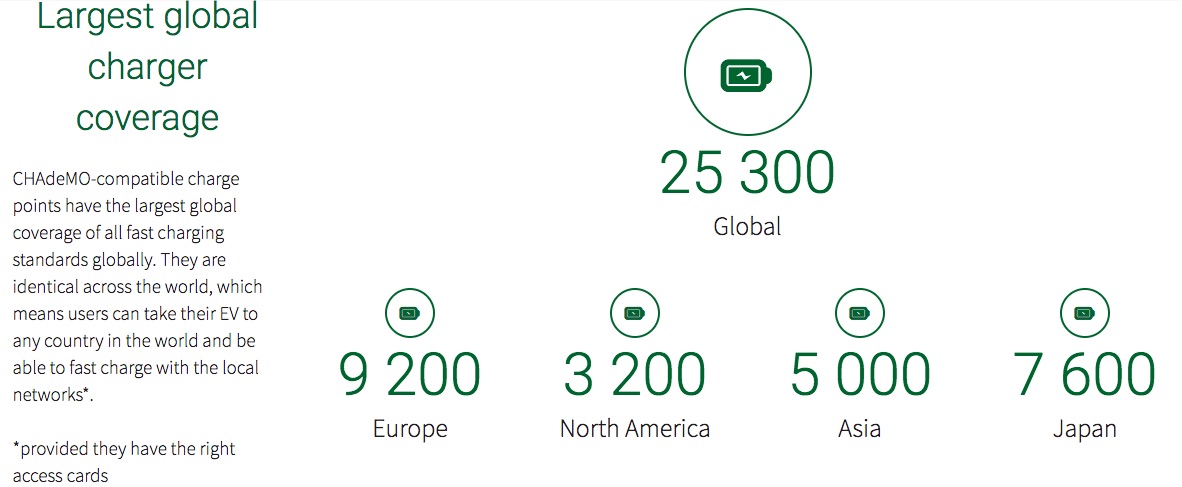
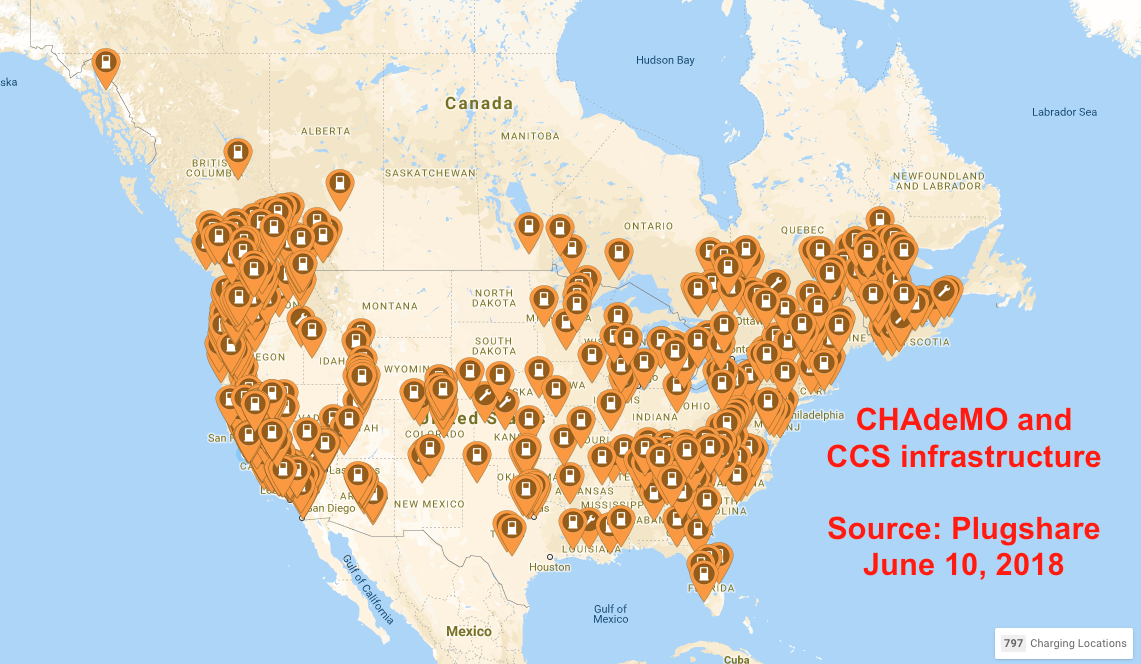
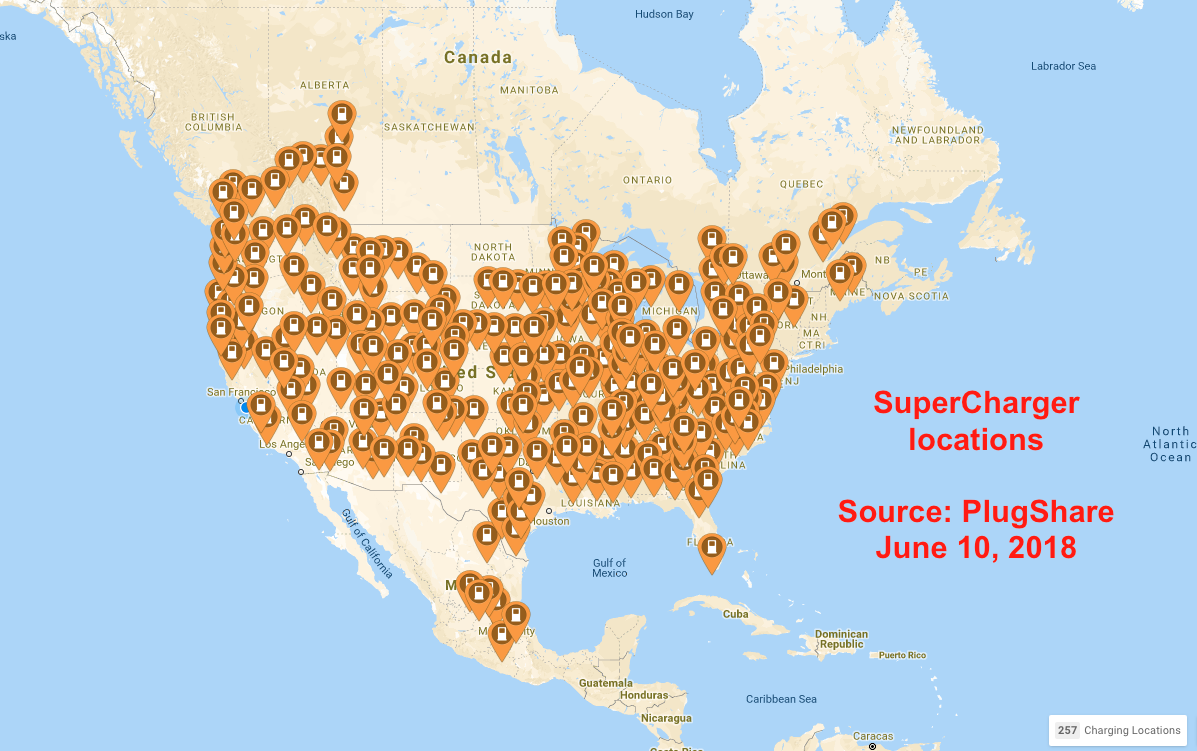
These are the count of CHAdeMO+CCS fast charging locations versus Supercharger locations, in North America, in June 2018. That is the two pools of investment going into divergent fast charging systems. What would the fast charging network be like if it was not split into two separate pools?
Currently Tesla gains by sticking with Supercharger because the Supercharger network is the biggest selling point for Tesla cars. Tesla has made sure its charging facilities are properly deployed for long distance travel, and Tesla car owners routinely use the Supercharger network for cross-country trips.
But it means that Tesla is bearing the entire burden of developing and selling electric cars, developing a sales and service network, and developing a charging station network. Tesla is therefore duplicating the efforts of the independent charging network companies.
Each company is of course free to make its own decisions, building the infrastructure where it sees fit, with the type of charging station it sees fit. As an open playing field, this is as it should be. In modern democratically-minded countries, there is no central committee dictating the location of fast food restaurants, or gasoline stations or anything. Okay, cities do have zoning requirements and development plans, but beyond that it's up to each player in the market to decide its own direction.
Governments have a role to play to impose order in certain situations. The idealized role for government is to act for the common benefit of all citizens. For example gasoline refueling does not have a similar problem with incompatible nozzles. The common nozzle design means gasoline car drivers refuel at any gas station. The shape of gasoline nozzles is mandated by a combination of government regulation and Society for Automotive Engineering (SAE) standards.
In other words, there is room for Government and Standards Organizations to impose some order and require a common fast charging standard.
Why aren't all EV charging stations using the same charging standard or charging plug?
The current situation for EV charging, especially fast charging, is a mess. There are multiple competing standards and you can arrive at a charging station only to find it does not support the charging port on your car.
All the previous information should have already explained why we got into this mess. A short answer is that it's a combination of
- Compromises made by car companies and standards organization
- Bravado/Hubris by the car manufacturers
The SAE-J1772 committee took a long time to get an alternate fast charging standard defined after they rejected adopting the CHAdeMO standard.
That meant Nissan and other CHAdeMO manufacturers had a few years with which to move forward with CHAdeMO as the sole fast charging standard. As a result there are tens of thousands of CHAdeMO stations installed worldwide.
That's an impressive installed base considering that for the most part CHAdeMO supports only the Nissan Leaf, and to a lesser extent the Kia Soul EV.
By the time CCS stations started to be deployed:
- CHAdeMO was very well entrenched (see numbers above).
- Tesla Supercharger stations were starting to be deployed
- CCS manufacturers were slow to ramp up sales of EV's using the CCS interface
In Europe there was a decision to use a different connector than the USA J1772 connector. The USA connector did not support 3 phase AC, only single phase AC, but in Europe three phase is widely available. That resulted in the IEC 62196 Type 2 connector, that supports not just single phase AC but also three phase AC. It's such a good connector that Tesla adopted it for use in Europe, instead of their own connector.
Authorities in the USA, in an apparent mode of Americans won't adopt a European standard (e.g. American's resistance to adopting the metric system), have refused to adopt this connector despite it being the more flexible design. There's also an issue of an installed base of USA J1772 charging stations.
Fortunately for the automakers, the IEC 62196 Type 2 connector contains all the same control/signal/power pins as the USA J1772 connector. The Type 2 connector uses a couple more pins to support the three phase AC use case. One supposes that USA automakers could decided to adopt the Type 2 plug, and rely on it being very easy to build an adapter allowing a Type 2 cord to plug into a USA J1772 port on a car.
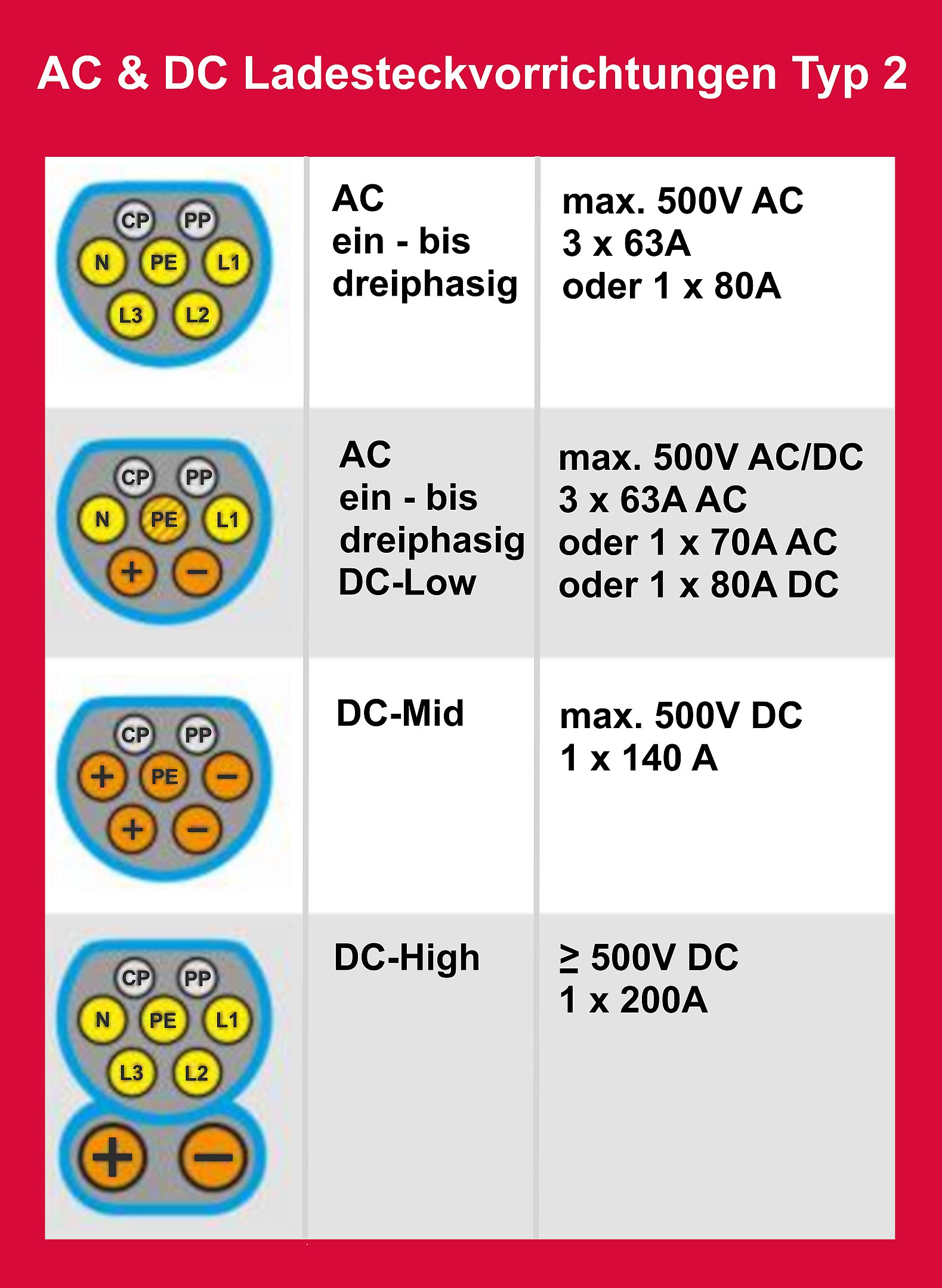
This diagram describes (with German text) how the IEC 62196 Type 2 connector can support:
- Single phase AC up to very high power levels
- Three phase AC up to very high power levels
- DC fast charging for the 50-70 kW charging rate
- DC fast charging (Using two extra pins) up to over 100 kW charge rate
By contrast the USA J1772 connector only supports single phase AC at up to 19 kiloWatts charge rate (240 volts 80 amps). In practice no USA J1772 based equipment gets anywhere near that theoretical maximum.
In other words we would all be better served by adopting the IEC 62196 Type 2 connector worldwide.
But some phrases come to mind:
- Not Invented Here
- Ours is Better
- Market Dominance
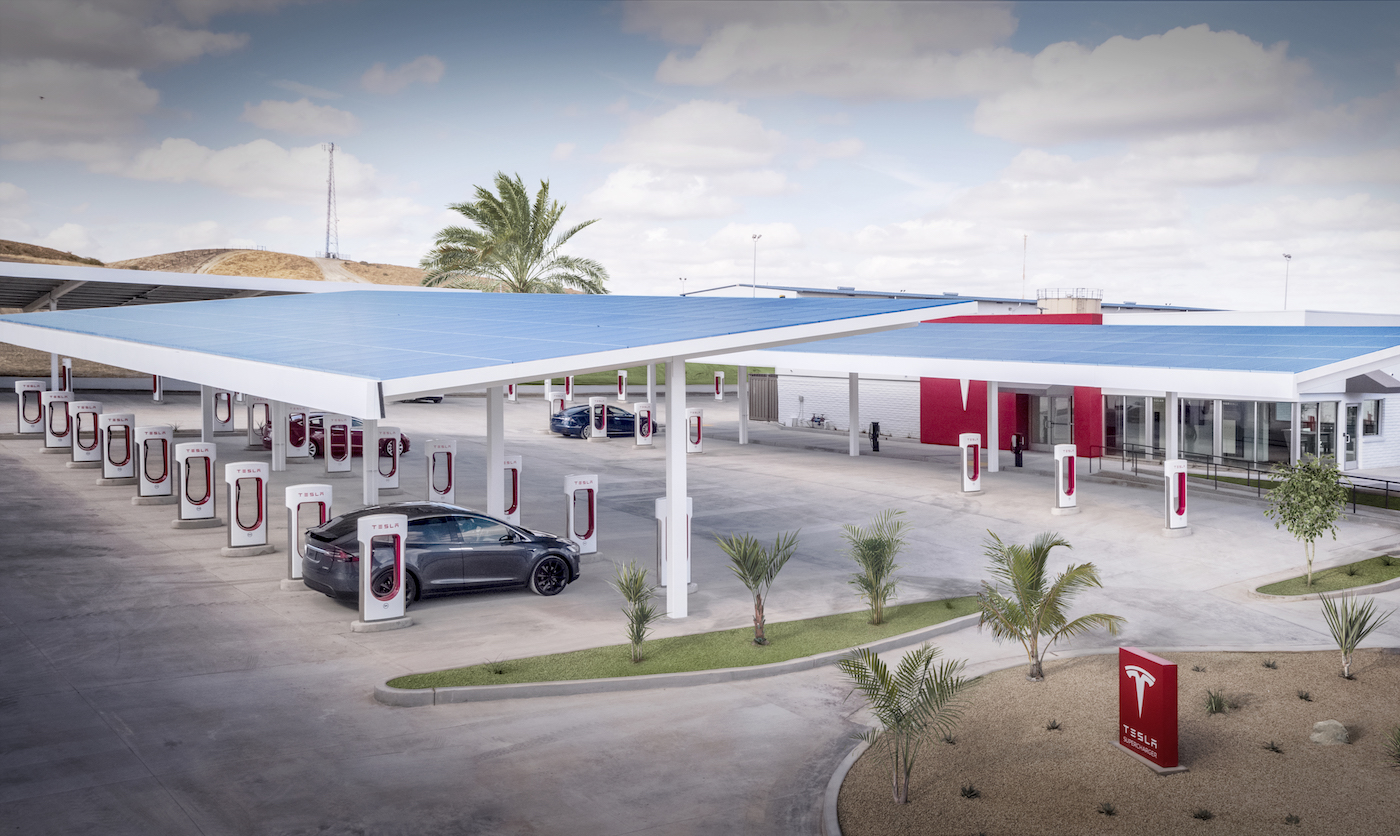
Why did Tesla develop an incompatible proprietary charging system?
Tesla developed the Supercharger as a proprietary system for a couple of valid reasons:
- The Combo Charging System (CCS) had not yet been finalized at the time Tesla needed to start building Supercharger stations
- The CHAdeMO standard requires a very unwieldy plug (Elon Musk said the esthetics of both CHAdeMO and CCS plugs was unacceptable)
- The 50 kiloWatt charging rate for both is - to Tesla's point of view - "slow charging"
Between the three points, Tesla had no choice. They needed to move forward in 2013 with a charging rate way beyond what CHAdeMO and CCS supported at the time. Even today (mid 2019) it is rare to find CCS or CHAdeMO stations supporting a 100 kW charging rate, while Tesla surpassed that rate years ago in the Supercharger network.
Tesla knew that a 100 kW rate would be far better to support road trips than the 50 kW rate targeted by Nissan and others. Road trips are much more pleasant at that higher charging rate. At 50 kW the effective trip speed is much lower, too low for the product Tesla wanted to sell.
Didn't Tesla offer the Supercharger network to the other manufacturers?
Yes, Tesla did make that offer. Specifically, the deal offered by Tesla is for other manufacturers to pay for part of the cost of the Supercharger network, and in exchange cars made by those manufacturers could use Supercharger stations. It wasn't said what the usage fee would be.
This plan doesn't seem like one the other manufacturers would find acceptable. Why would another manufacturer (GM, Nissan, Ford, etc) want to give marketing mindshare/power to Tesla?
Under those terms, incumbent manufacturers would be telling their customers to use Tesla's charging equipment. And, why would they do that?



